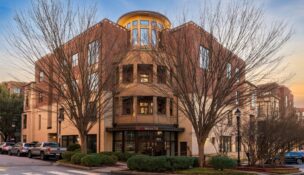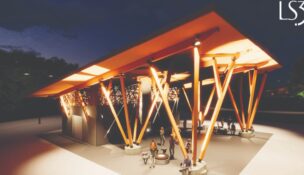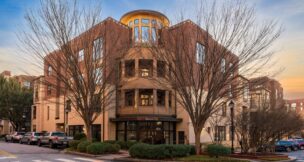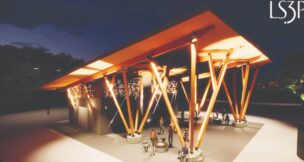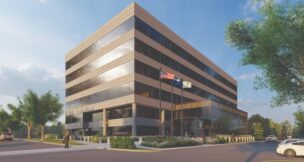Real estate agents say low inventory keeps prices up
Staff //February 13, 2018//
Last year was a strong one for the real estate market, according to a report from the Charleston Trident Association of Realtors, and agents are optimistic that their good fortune will continue in 2018.
“2017 was the best year I’ve had, and I’ve already got two closings (this year). … I’m basically showing property around the clock,” said Ariel Trouche, a real estate agent with Carolina One Real Estate. “So my biggest problem is finding the inventory.”
 According to CTAR’s Annual Report on the Charleston Area Housing Market, new listings increased 4.5% in 2017 and closed sales were up by 3.1%. Houses stayed on the market for an average of 55 days in 2017, the report said, three days fewer than in 2016 and 31 fewer days than in 2013.
According to CTAR’s Annual Report on the Charleston Area Housing Market, new listings increased 4.5% in 2017 and closed sales were up by 3.1%. Houses stayed on the market for an average of 55 days in 2017, the report said, three days fewer than in 2016 and 31 fewer days than in 2013.
Joey Von Nessen, a University of South Carolina research economist who spoke at CTAR’s Year in Review Residential Market Update, said housing markets across the state look good, and he predicted 4.1% growth in sales across the state.
According to CTAR’s report, the median house price in the Charleston region was $251,333, which is 4.8% higher than in 2016 and 22.7% higher than it was in 2013. Von Nessen said this is the result of home prices rising to meet demand after the recession, as well as prices normalizing after the recession.
“We’re seeing price increases … across all price points,” he said. “It’s not limited to one area of the market. This is a phenomenon that is affecting all of the housing market, in general, in the Charleston region.”
Trouche said she thinks prices will continue to rise at a “slow and steady” pace.
“I don’t see them rising at the same rate they rose for the last 24 months, and I feel like they slowed down a little bit over the last six months in that precipitous climb,” she said, adding, “I do think it’s still on the upswing, but I don’t think it’s at the same clip, which I actually think is a good thing.”
Paul Bishop, vice president of research for the National Association of Realtors, said rising prices aren’t a signal that a bubble is looming, as it was before the Great Recession when people were buying homes for financial gain under the assumption that prices would keep rising.
“The dynamics and the incentives that are in the market today are a lot different,” he said. “It’s not based on speculation, by and large, but simply the basics of economics, balancing supply and demand.”
Owen Tyler, managing broker at The Cassina Group, said he expected the upward sales trend from 2017 to continue in 2018, but, like Trouche, the biggest hurdle he is facing is having enough inventory to sell.
“I don’t think it’ll keep anybody out of the market,” he said. “But what it does, unfortunately, is it drives up price. So … the slower construction is for new construction, it allows time for those prices to increase.”
However, Tyler said, a declining amount of developable land, especially in Mount Pleasant and downtown Charleston, stands in the way of new construction in those areas, pushing prices even higher.
“It’s important to remember that real estate is local and that what may be happening in your neighborhood may not be what’s happening in other neighborhoods,” he said.
Kimberly Lease, CTAR president and a real estate agent at Century 21 Properties Plus, said 2017 sales surpassed records set in 2005, which she attributed to high consumer confidence; companies such as Volvo and Mercedes investing in the region and creating jobs; and the overall attractiveness of living in Charleston.
Lease warned, though, that higher prices have started to pose problems for the region.
“With median prices higher and continued low inventory, our supply and demand are out of balance, which has priced some people out of the market, unfortunately,” she said.
Affordability, Lease added, is a key contributor to the region’s traffic problems.
“People are having to drive until they qualify, so to say, resulting in longer commutes and more traffic congestion when people can’t live close to where they work,” Lease said.
Bishop said the inventory shortage is a nationwide problem. He said the national group thinks of a balanced market as a six-month supply of homes, meaning it would take six months to deplete the current inventory. Right now, inventory levels are between three and four months’ worth.
“Until that reverses or more homes are built at a faster pace, we’re probably going to be living with some of these same concerns, at least for the next year or so,” he said.
Lease said, though, that affordability is about more than just housing.
“Affordability is about more than just inventory and demand — more inventory would be good, but if it’s not at the right price points, it’s not a solution,” she said. “We can build, build, build, but if no one can afford to buy … that brings in the topic of the lagging wage growth in our region.”
Lease said CTAR is working with elected officials and staff at municipalities across the Lowcountry to find solutions to affordability issues, as well as working with the S.C. Community Loan Fund, various chambers of commerce and the Charleston Regional Development Alliance to fund research.
Despite the challenges, Lease said, 2018 seems positive for the real estate market.
“It’s supposed to be a great market, with continued growth and slight price increases,” she said. “We’re still a very wonderful place to come to.”
This story originally appeared in the Feb. 5, 2018, print edition of the Charleston Regional Business Journal.
r






